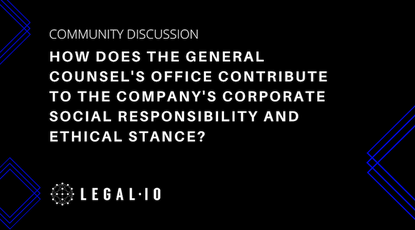The legal industry is undergoing a seismic shift in hiring trends, as revealed by the 2024 American Lawyer Laterals Report as well as the 2024 Report on the State of the US Legal Market. This article delves into the key insights from these reports, touching on the future of legal work across the United States.
The New World of Legal Hiring
The legal market has been fundamentally altered over the past 15 years, with ever-accelerating change increasingly driven by generative artificial intelligence. The Reuters 2024 Report on the State of the US Legal Market surveys a sector still feeling aftershocks from the massive shifts of the past decade.
Clients are more aggressive about tiering work to lower-cost firms to slash costs. This shift in power from outside counsel to clients has led to a transition from the 2010s, known as “the Transactional Decade,” to the 2020s, where law firm growth is pegged to counter-cyclical practices like litigation, bankruptcy, and labor & employment.
The Rise of Large Group Lateral Hiring
Large firms are upping the ante for large group lateral hiring. Firm leaders are more comfortable with hiring groups based in multiple jurisdictions because of virtual work. This trend is magnified when hiring large groups based in multiple locations.
The 2024 American Lawyer Laterals Report indicates:
-
Lateral partner moves dropped 7% in 2023 (3,349) compared to 2022 (3,633), but was up about 9% compared to 2021 (3,066)
-
The higher ranked a firm, the more lateral partner hires they made: AmLaw 50 made 1,407 hires (42%); the 2nd 50 made 1,005 hires (30%); firms ranked 101-150 made 536 hires (16%); and firms ranked 151-200 made 402 (12%)
-
Overall moves (partners, associates, and counsels) in countercyclical practices were relatively flat or down a little: bankruptcy (-1%), litigation (-2%), and labor & employment (-7%), compared to big drops among corporate practices (-35%) and real estate (-50%)
-
Many of the partner moves were on the coasts: New York had 18% (603), California had 17% (569), Washington, DC had 14% (469), Texas had 8% (268), Illinois had 7% (234), and Florida had 6% (200+)
“So what we observed was the AmLaw 200 firms were sort of, for the first time, looking outside their traditional hiring channels, rather than simply relying on other Am Law 200 talent,” said Craig Savitzky, Director of Content Creation and Data Analysis with Leopard Solutions. “They were looking to poach from midsize firms. So just kind of looking at alternative means of hiring,”
Hiring entry-level associates “represented a big shift in terms of the movement of talent,” Savitzky said. “And I think we also saw the time to make partner decreased, so that might be a way in which law firms were kind of looking to make themselves more marketable, from a talent-acquiring standpoint, as sort of a selling point.”
When Paul Hastings recruited a 43-lawyer restructuring team from Stroock & Stroock & Lavan, it was seen as a “unicorn situation” that happens once in a decade in the legal market. However, this seems to be the beginning of a wave of ever-growing group departures involving professionals in different cities.
The Divergence of Law Firms
There’s a growing split between large and mid-size law firms. While the largest firms have been cutting associate headcount, midsize firms are filling their associate ranks aggressively. Midsize law firms led the market for demand growth in 2023, growing by an average of 2.4%, while Am Law 100 firms posted flat demand growth.
This split is in part due to partners moving to and from different sized law firms while maintaining lateral grounds. These grounds include a difference in demand for certain legal services.
Sabina Lippman, co-founder of legal recruiting firm Lippman Jungers, said that in her practice, she noted a lower demand for service partners in the mergers and acquisitions and private equity spaces. “Firms were still going after M&A and private equity partners that met a strategic need,” she said. “Or when firms invested in capital markets partners in 2022, they did so with the idea that, while there may not be as much work now, they (the firms) are not going anywhere, and that when things turn around, they are hoping for ‘one plus one equals three.”
The Future of Legal Hiring
Law firms have a common goal in mind – widening the pay ratio gap between the highest- and lowest-earning partners. This is done in order to retain high performing talent.
In 2019, partner compensation of more than $20M was “unheard of,” said Peter Zeughauser, founder of Zeughauser Group. And at AmLaw 25-50 firms, Zeughauser said he’s starting to see pay as high as $10-$15M.
“Even the high-performing firms today, like a Quinn or a Cravath or a Cleary, they’re feeling pressure to push up their [profits per equity partner] because of Kirkland, Paul Weiss and Latham & Watkins, because of their buying power with laterals,” Zeughauser said. “They’re able to pick off just about anyone [who] is willing to be picked off.”
Maggie Miller, a principal at Lotis Blue Consulting says that by widening the pay ratio firms face more risk when attracting lateral talent. “Pay ratio is something that needs to be in support of your existing partnership, not just trying to attract laterals,” Miller said. “If you are achieving a ratio where you’re able to pay your partners what is fair and helping to retain them, that is just as important to being able to attract lateral hires.”
These reports paint a picture of a legal industry in flux, with hiring trends reflecting the broader shifts in the market. As law firms navigate these changes, the focus will be on adapting to the new realities of the legal market and leveraging the opportunities that these changes present.








